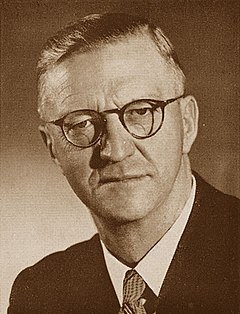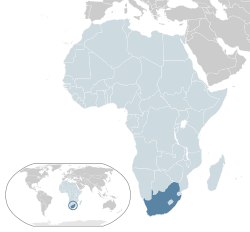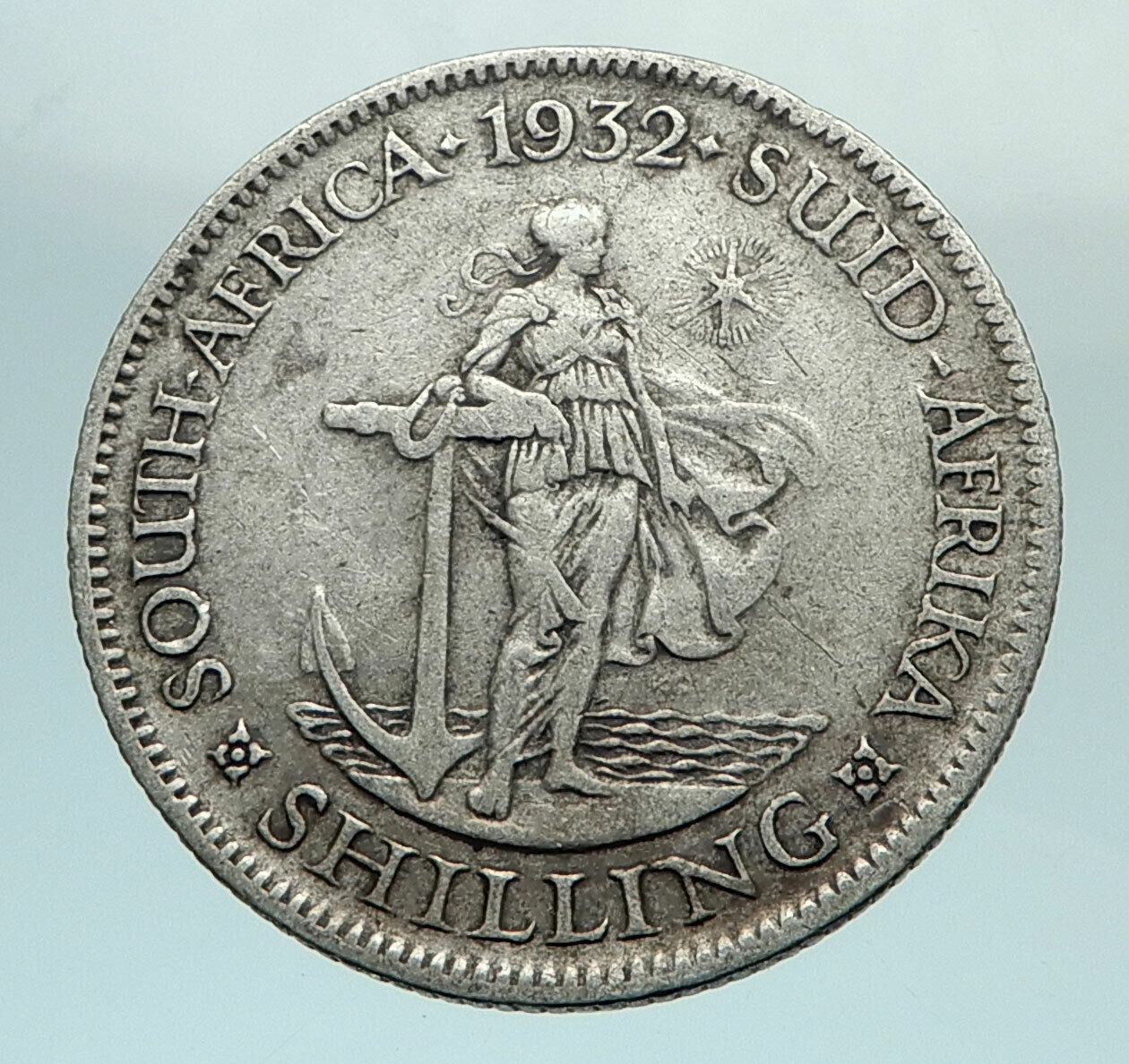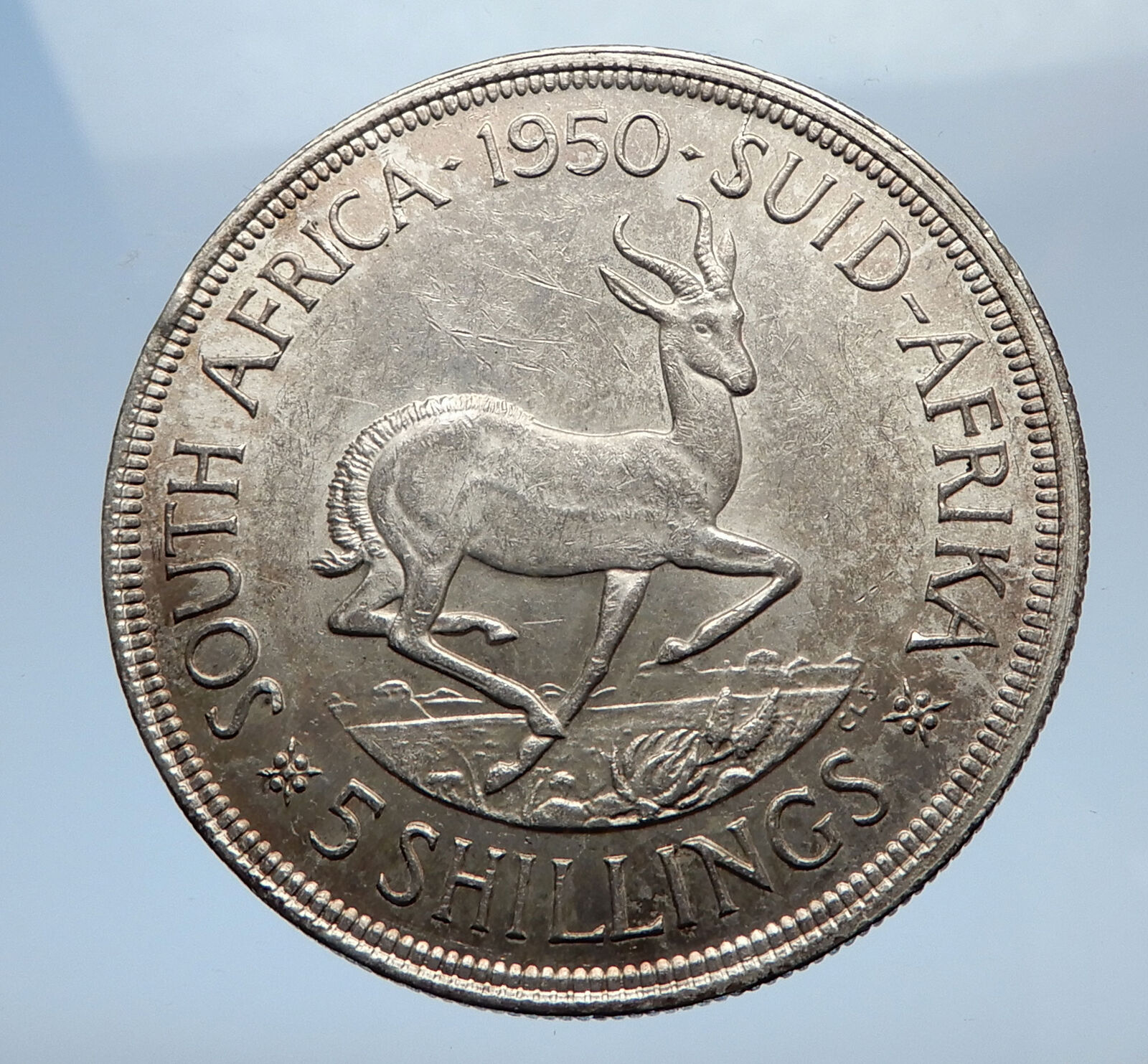|
South Africa
The end of Charles Robberts Swart’s presidency
1968 Nickel 50 Cents 28mm (9.38 grams)
Reference: KM# 79.2, Hern# D197 | Engraver: Tommy Sasseen
SUID-AFRIKA 1968 T.S., President Charles Swart facing 5/6 left.
50 T.S., Three flowers, all native to South Africa – from left to right: Arum Lily; African Lily ;A Bird-of-Paradise.
You are bidding on the exact item pictured, provided with a Certificate of Authenticity and Lifetime Guarantee of Authenticity.
 Charles Robberts Swart DMS (5 December 1894 – 16 July 1982), nicknamed Blackie, was a South African politician who served as the last governor-general of the Union of South Africa from 1959 to 1961 and the first state president of the Republic of South Africa from 1961 to 1967. Charles Robberts Swart DMS (5 December 1894 – 16 July 1982), nicknamed Blackie, was a South African politician who served as the last governor-general of the Union of South Africa from 1959 to 1961 and the first state president of the Republic of South Africa from 1961 to 1967.
In 1923, he was elected to the House of Assembly as the Member of Parliament for Ladybrand. until he was defeated in 1938. He became leader of the National Party in the Orange Free State and MP for Winburg in 1941. After the end of the Second World War, he was appointed Minister of Justice when the National Party came to power in 1948, and was responsible for legislation to strengthen the powers of the South African Police to suppress anti-apartheid activity. Between 1949 and 1950 he held the portfolio for Education, Arts and Science and served as Deputy Prime Minister between 1954 and 1959.
In 1959, Swart was appointed Governor-General, but like his predecessor E.G Jansen, he was a staunch republican. Despite this, he had earlier kneeled before Queen Elizabeth II and kissed her hand. In a referendum the following year, a small majority of White voters endorsed a government proposal to become a republic. In 1961, after signing the new republican constitution passed by Parliament into law, he asked the Queen to release him from office, and Parliament then elected him as State President, the new post which replaced the monarch and the Governor-General as ceremonial head of state. Nelson Mandela and other underground Black resistance leaders tried to protest against the change to the new system by planning a three-day general strike of non-White workers, but the government preemptively averted most of these plans through an extensive use of police force to persecute the dissenters.
Although elected for a seven-year term in office, Swart served as state president for only six years, and retired in 1967. After his retirement, Swart was awarded the Decoration for Meritorious Services by State President Jim Fouché. He died on 16 July 1982, aged 87. Swart was popularly known as “Blackie” (Swart is Afrikaans for “black”) or as “Oom Blackie”, oom being Afrikaans for “uncle”.
The tallest building in Bloemfontein, which housed various governmental departments and the Law Faculty of the University of the Orange Free State, was named the President CR Swart Building in his honour. In 2015, the ANC government renamed the popular CR Swart Building the Fidel Castro Building.
A statue of CR Swart at the University of the Free State was destroyed by protesting students in late-February 2016.
The highest peak in the remote Prince Edward Islands was called State President Swart Peak, before it was renamed Mascarin Peak in 2003.
Swart’s portrait is depicted on the obverses of the coins of the South African rand – from 1 to 50 Cents dated 1968, which was struck to commemorate him as the first State President of South Africa.
 South Africa, officially the Republic of South Africa (RSA), is the southernmost country in Africa. It is bounded on the south by 2,798 kilometres (1,739 mi) of coastline of Southern Africa stretching along the South Atlantic and Indian Oceans; on the north by the neighbouring countries of Namibia, Botswana, and Zimbabwe; and on the east and northeast by Mozambique and Swaziland; and surrounds the kingdom of Lesotho. South Africa is the 25th-largest country in the world by land area, and with close to 56 million people, is the world’s 24th-most populous nation. It is the southernmost country on the mainland of the Old World or the Eastern Hemisphere. About 80 percent of South Africans are of Sub-Saharan African ancestry, divided among a variety of ethnic groups speaking different Bantu languages, nine of which have official status. The remaining population consists of Africa’s largest communities of European (white), Asian (Indian), and multiracial (coloured) ancestry. South Africa, officially the Republic of South Africa (RSA), is the southernmost country in Africa. It is bounded on the south by 2,798 kilometres (1,739 mi) of coastline of Southern Africa stretching along the South Atlantic and Indian Oceans; on the north by the neighbouring countries of Namibia, Botswana, and Zimbabwe; and on the east and northeast by Mozambique and Swaziland; and surrounds the kingdom of Lesotho. South Africa is the 25th-largest country in the world by land area, and with close to 56 million people, is the world’s 24th-most populous nation. It is the southernmost country on the mainland of the Old World or the Eastern Hemisphere. About 80 percent of South Africans are of Sub-Saharan African ancestry, divided among a variety of ethnic groups speaking different Bantu languages, nine of which have official status. The remaining population consists of Africa’s largest communities of European (white), Asian (Indian), and multiracial (coloured) ancestry.
South Africa is a multiethnic society encompassing a wide variety of cultures, languages, and religions. Its pluralistic makeup is reflected in the constitution’s recognition of 11 official languages, which is among the highest number of any country in the world. Two of these languages are of European origin: Afrikaans developed from Dutch and serves as the first language of most white and coloured South Africans; English reflects the legacy of British colonialism, and is commonly used in public and commercial life, though it is fourth-ranked as a spoken first language. The country is one of the few in Africa never to have had a coup d’état, and regular elections have been held for almost a century. However, the vast majority of black South Africans were not enfranchised until 1994. During the 20th century, the black majority sought to recover its rights from the dominant white minority, with this struggle playing a large role in the country’s recent history and politics. The National Party imposed apartheid in 1948, institutionalising previous racial segregation. After a long and sometimes violent struggle by the African National Congress and other anti-apartheid activists both inside and outside the country, discriminatory laws began to be repealed or abolished from 1990 onwards.
Since 1994, all ethnic and linguistic groups have held political representation in the country’s democracy, which comprises a parliamentary republic and nine provinces. South Africa is often referred to as the “Rainbow nation” to describe the country’s multicultural diversity, especially in the wake of apartheid. The World Bank classifies South Africa as an upper-middle-income economy, and a newly industrialised country. Its economy is the second-largest in Africa, and the 34th-largest in the world. In terms of purchasing power parity, South Africa has the seventh-highest per capita income in Africa. However, poverty and inequality remain widespread, with about a quarter of the population unemployed and living on less than US$1.25 a day. Nevertheless, South Africa has been identified as a middle power in international affairs, and maintains significant regional influence.
|





 Charles Robberts Swart DMS (5 December 1894 – 16 July 1982), nicknamed Blackie, was a South African politician who served as the last governor-general of the Union of South Africa from 1959 to 1961 and the first state president of the Republic of South Africa from 1961 to 1967.
Charles Robberts Swart DMS (5 December 1894 – 16 July 1982), nicknamed Blackie, was a South African politician who served as the last governor-general of the Union of South Africa from 1959 to 1961 and the first state president of the Republic of South Africa from 1961 to 1967. South Africa, officially the Republic of South Africa (RSA), is the southernmost country in Africa. It is bounded on the south by 2,798 kilometres (1,739 mi) of coastline of Southern Africa stretching along the South Atlantic and Indian Oceans; on the north by the neighbouring countries of Namibia, Botswana, and Zimbabwe; and on the east and northeast by Mozambique and Swaziland; and surrounds the kingdom of Lesotho. South Africa is the 25th-largest country in the world by land area, and with close to 56 million people, is the world’s 24th-most populous nation. It is the southernmost country on the mainland of the Old World or the Eastern Hemisphere. About 80 percent of South Africans are of Sub-Saharan African ancestry, divided among a variety of ethnic groups speaking different Bantu languages, nine of which have official status. The remaining population consists of Africa’s largest communities of European (white), Asian (Indian), and multiracial (coloured) ancestry.
South Africa, officially the Republic of South Africa (RSA), is the southernmost country in Africa. It is bounded on the south by 2,798 kilometres (1,739 mi) of coastline of Southern Africa stretching along the South Atlantic and Indian Oceans; on the north by the neighbouring countries of Namibia, Botswana, and Zimbabwe; and on the east and northeast by Mozambique and Swaziland; and surrounds the kingdom of Lesotho. South Africa is the 25th-largest country in the world by land area, and with close to 56 million people, is the world’s 24th-most populous nation. It is the southernmost country on the mainland of the Old World or the Eastern Hemisphere. About 80 percent of South Africans are of Sub-Saharan African ancestry, divided among a variety of ethnic groups speaking different Bantu languages, nine of which have official status. The remaining population consists of Africa’s largest communities of European (white), Asian (Indian), and multiracial (coloured) ancestry.




